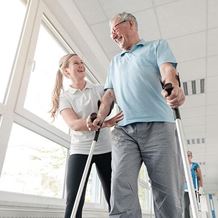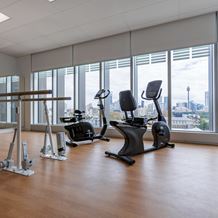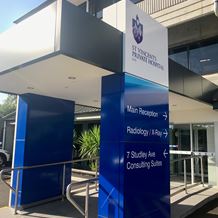Not So Tear-Able: New Advances in the Treatment of ACL Tears
By Mr Nathan White
- Home
- Patient News
- New Advances in the Treatment of ACL Tears
ACL tears
Your knees are home to three bones, four ligaments, two tendons, and two kinds of cartilage. They are the largest joint in your body, and given that they are responsible for the forwards, sideways, and twisting movement of your legs, it’s no surprise that knee injuries are some of the most common sports injuries in the world.
The most debilitating knee ligament injury is the ACL tear. Your ACL is your Anterior Cruciate Ligament—one of two major ligaments on the inside of your knee joint that connect your thighbone (femur) to your shinbone (tibia). It gives rotational stability to your knee and controls its back and forth motion.
ACLs usually tear during sports that require quick stops and changes in direction, like basketball, football, soccer and skiing—and generally as a result of a pivot or a jump landing gone wrong. Most patients will hear a pop as their ACL ruptures, and lose stability and range of motion as their knee begins to swell and cause severe pain.
Treatment for ACL tears has come a long way. We spoke to Nathan White, orthopaedic surgeon at the brand new Park Clinic Orthopaedics at Kew, to find out about the latest advancements in ACL tear treatment.

Treatment options
Not all ACL tears will require surgery—this comes down to the patient’s individual profile. “If a patient is younger, or wishes to return to a twisting sport, it’s likely they’ll reach the limits of their knee’s stability without a reconstruction,” Mr White explains.
For those content with non-surgical treatment, rehabilitation is similar to that seen post-surgery and consists primarily of physiotherapy. The process involves gradually restoring range of movement and rebuilding strength, agility and coordination. It’s a long journey, requiring months of commitment, but it’s better to start earlier than later—in fact, even those patients who opt for surgery should begin rehabilitation before going under the knife.
New advances in surgical treatments
While the fundamentals of knee surgery remain true—get a good graft, put it in the right position, rehabilitate the knee well—things have changed considerably in the way surgeons assess individual patient needs.
“Surgeons now take into account a person’s activity requirements, and the level of motion they want to return to, as well as the subtle differences in the way their knee moves, and their individual risk profile,” Mr White explains.
Individual profiles affect two considerations during the surgical process: graft choice, and whether to perform a lateral tenodesis. Grafts can be made from a range of tendons (hamstrings, quadriceps and patella tendons are all good options), with different reasons for using each.
Surgeons are now more commonly reinforcing an ACL reconstruction using a procedure called lateral extra-articular tenodesis. Quite a mouthful, but the concept is simple: reinforce structures on the lateral side of the knee for extra stability and graft protection. “This is most useful for high-risk patients, such as those who are unusually flexible, have some malalignment, are younger, or when the surgery is a revision reconstruction,” says Mr White.
Risks of not treating ACL tears
When ignored, an ACL tear can cause damage to the rest of your knee over time. “Nothing will destroy a knee joint faster than repeated instability,” Mr White explains. Though some people cope quite well without an ACL (following proper rehab, and often choosing not to return to sport), ignoring an unstable knee post-ACL rupture will eventually cause other structures in your knee—namely your meniscus and joint surface—to wear out as a result of the extra load. It’s this damage that can lead to early arthritis.
Mr Nathan White
Mr White is one of a group of surgeons who have recently established Park Clinic Orthopaedics at Kew, a boutique facility sub-specialising in the surgery and rehabilitation of knee injuries and conditions affecting the knee across all age groups. Mr White is passionate about knee surgery, and his enthusiasm for teaching and research has seen him teach at the University of Melbourne and the Royal Australian College of Surgeons.




